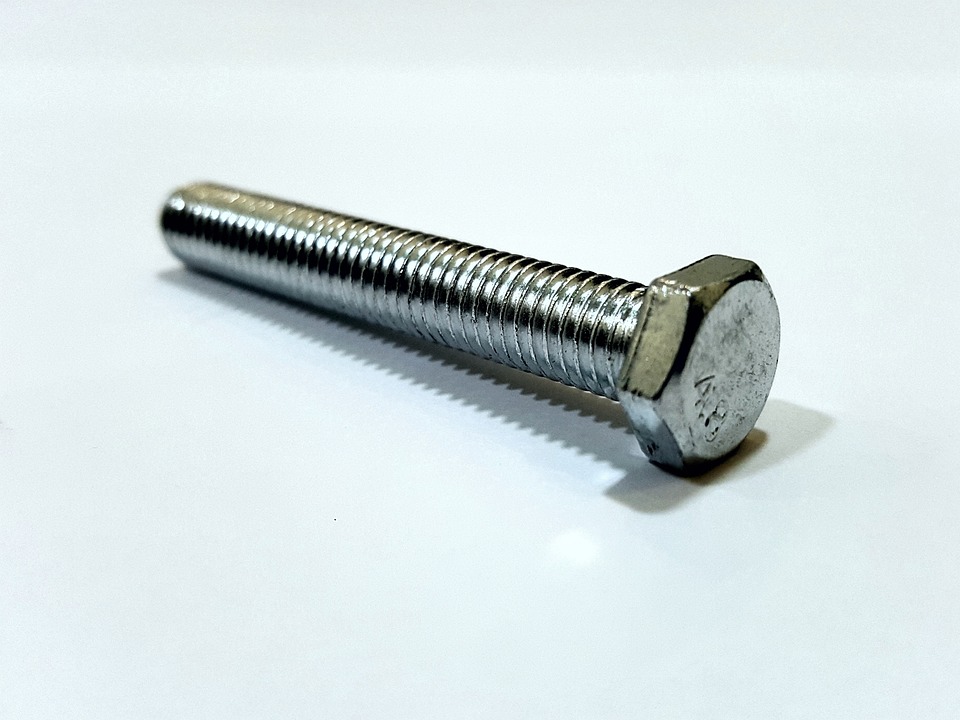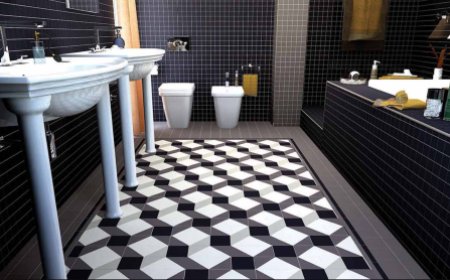Top 10 New Orleans Spots for Afternoon Drinks
Top 10 New Orleans Spots for Afternoon Drinks You Can Trust New Orleans isn’t just a city—it’s a sensory experience. The air hums with jazz, the scent of beignets lingers on the breeze, and the rhythm of the Mississippi shapes every corner of life here. But among the grand parades, historic architecture, and world-renowned cuisine, one quiet ritual endures: the afternoon drink. Whether you’re a lo
Top 10 New Orleans Spots for Afternoon Drinks You Can Trust
New Orleans isn’t just a city—it’s a sensory experience. The air hums with jazz, the scent of beignets lingers on the breeze, and the rhythm of the Mississippi shapes every corner of life here. But among the grand parades, historic architecture, and world-renowned cuisine, one quiet ritual endures: the afternoon drink. Whether you’re a local seeking refuge from the midday heat or a visitor craving authenticity, the right afternoon libation can transform an ordinary hour into a cherished memory. Yet with countless bars, lounges, and sidewalk cafés vying for attention, knowing where to go—where the drinks are crafted with care, the ambiance is genuine, and the service is rooted in tradition—isn’t always easy.
This guide reveals the top 10 New Orleans spots for afternoon drinks you can trust. These aren’t just popular venues—they’re institutions where the cocktail is an art form, the staff know your name by the third visit, and the atmosphere hasn’t been diluted by tourist traps. Each location has been selected based on decades of consistent quality, local reverence, ingredient integrity, and the kind of soul that can’t be manufactured. Forget gimmicks. Forget overpriced plastic cups with umbrellas. Here, you’ll find drinks made with precision, served with pride, and enjoyed in spaces that honor the city’s rich heritage.
Before we dive into the list, let’s talk about why trust matters—because in a city where every block holds a story, not every story is worth believing.
Why Trust Matters
In New Orleans, the drink is more than refreshment—it’s ritual. It’s the way neighbors connect, the way history is passed down, the way joy is celebrated and sorrow is softened. But in recent years, the city’s drinking culture has faced a quiet erosion. Chains have moved in. Pre-mixed cocktails in plastic cups have replaced hand-squeezed citrus. Bartenders who’ve spent decades mastering the craft are replaced by temp workers trained on TikTok tutorials.
Trust, then, becomes your compass. It’s the difference between a drink that tastes like a memory and one that tastes like marketing. A trusted spot doesn’t just serve alcohol—it serves authenticity. It’s the bar where the ice is freshly made, the herbs are plucked from a windowsill garden, and the bartender remembers how you take your bourbon—neat, with a twist, or with a single drop of orange bitters.
Trust is earned through consistency. It’s the bar that stayed open through hurricanes, kept its original wood floors, and never changed its signature cocktail recipe—even when trends demanded it. It’s the place where the owner still greets you by name, where the music isn’t piped in from a playlist, but played live by a local musician who’s been performing there since the 90s.
When you choose a trusted spot, you’re not just ordering a drink. You’re supporting a legacy. You’re keeping alive the traditions that make New Orleans unique. And in return, you’re given something rare: a moment of real connection, in a world that’s increasingly artificial.
This list is curated with that ethos in mind. Every venue here has been visited repeatedly over multiple seasons, evaluated for drink quality, service, atmosphere, and cultural integrity. No sponsorships. No paid promotions. Just the truth—tasted, tested, and trusted.
Top 10 New Orleans Spots for Afternoon Drinks
1. The Carousel Bar & Lounge
Perched on the 19th floor of the Hotel Monteleone, The Carousel Bar & Lounge is more than a bar—it’s a moving monument to New Orleans elegance. Opened in 1949, this circular bar rotates slowly, completing a full revolution every 15 minutes, offering guests a changing view of the French Quarter without ever leaving their seat. The atmosphere is timeless: brass accents, velvet booths, and crystal chandeliers that cast a golden glow over every drink.
The afternoon menu features classics with precision: the Vieux Carré, a complex blend of rye, cognac, sweet vermouth, Benedictine, and bitters, is crafted to the exact recipe developed by Walter Bergeron in 1938. The bartenders here don’t just pour—they perform. Each pour is deliberate, each garnish intentional. The ice? Hand-chipped. The citrus? Squeezed to order. The spirits? Single-origin, carefully selected.
What makes this spot trustworthy? Consistency. For over 70 years, the same techniques, same recipes, same attention to detail. Locals come here for quiet afternoons after museum visits. Tourists come for the spectacle. But those who return year after year? They come for the drink—and the certainty that it will be perfect, every time.
2. Lafitte’s Blacksmith Shop
Nestled in the heart of the French Quarter, Lafitte’s Blacksmith Shop is one of the oldest continuously operating bars in the United States, with roots tracing back to the 1720s. Its dark wooden beams, candlelit alcoves, and centuries-old brick walls give it the feel of a secret hideout from another century. This isn’t a place for loud music or neon signs—it’s a sanctuary for those who appreciate history with their bourbon.
Afternoon here means sipping a Sazerac, the official cocktail of New Orleans, made with rye whiskey, absinthe rinse, sugar, and Peychaud’s bitters. The bar keeps its original recipe intact, and the bartender will tell you the story behind each ingredient. The absinthe rinse? Done with a French-made bottle from the 19th century. The sugar? Demerara, hand-granulated. The glass? Chilled with ice from the bar’s own ice machine—not the freezer down the hall.
What sets Lafitte’s apart is its refusal to modernize for the sake of trend. No Instagrammable cocktails here. No gimmicks. Just the real thing, served by staff who’ve worked here for decades. The bar’s owner, a direct descendant of the original proprietor, still makes occasional rounds, checking in on guests like family. If you want to taste New Orleans as it was, this is where you go.
3. Antoine’s Restaurant – The Bar
While Antoine’s is world-famous for its fine dining, few visitors realize that its bar is a hidden gem for afternoon libations. Established in 1840, Antoine’s is the oldest family-run restaurant in the U.S., and its bar retains the same refined charm as its dining rooms. The afternoon crowd here is quieter than at peak dinner hours—locals, artists, and historians who come to unwind with a perfectly balanced Ramos Gin Fizz or a classic Sidecar.
The Ramos Gin Fizz is a masterpiece. Made with gin, lemon and orange juice, cream, sugar, egg white, and orange flower water, it’s shaken for a full 12 minutes by hand—no electric shakers here. The result is a cloud-like foam that clings to the rim of the glass, light and effervescent. The bartenders have trained for years to perfect the technique, and they’ll explain the history of the drink—created in 1888 by Henry C. Ramos for his bar on Canal Street.
Trust here comes from lineage. The same family has run this bar for eight generations. The recipes haven’t changed. The glassware is original. The service is formal but warm, never rushed. It’s a place where time slows down, and every sip feels like a tribute to tradition.
4. The Sazerac Bar at the Roosevelt Hotel
Step into the Sazerac Bar, and you’re stepping into the very birthplace of New Orleans’ most iconic cocktail. Located inside the historic Roosevelt Hotel, this bar was renovated in 2014 to reflect its 19th-century origins, with dark mahogany panels, vintage mirrors, and plush seating that invites lingering. The bar’s centerpiece? A 1920s brass Sazerac bar rail, salvaged from a defunct downtown saloon.
The Sazerac here is the gold standard. Made with rye whiskey aged in new American oak barrels, an absinthe rinse from a 19th-century French bottle, and Peychaud’s bitters—distilled in New Orleans since 1838—the drink is served in a chilled glass with a twist of lemon peel. The bar doesn’t serve it with sugar cubes. They use demerara syrup, made in-house from raw cane sugar.
What makes this spot trustworthy? Expertise. The bartenders here are trained in the Sazerac Company’s original methods. Many have worked in the industry for over 20 years. The bar doesn’t offer a “modern twist” on the Sazerac—it offers the real thing, every time. And if you ask, they’ll show you the original recipe book from 1875, still kept behind the counter.
5. Arnaud’s French 75 Bar
Inside the legendary Arnaud’s restaurant, the French 75 Bar is a jewel box of Art Deco elegance. Opened in 1918, the bar was designed to evoke the glamour of 1920s Paris, with mirrored walls, crystal chandeliers, and a ceiling painted to mimic a starry night. The afternoon crowd here is a mix of old-money locals and discerning travelers who know that the French 75 isn’t just a cocktail—it’s a moment.
The French 75 here is made with cognac (not gin, as some versions use), fresh lemon juice, simple syrup, and a touch of champagne. The cognac is sourced from a single estate in Cognac, France, and the champagne is a vintage brut from a small grower in the Marne region. The drink is served in a chilled flute, garnished with a twist of lemon and a single sugar crystal on the rim.
What earns trust here? Authenticity in every detail. The bar doesn’t use pre-bottled mixers. The syrup is made daily. The lemon is hand-squeezed. The champagne is poured slowly, in two stages, to preserve the effervescence. The bartenders wear white jackets and tie their hair back—no tattoos, no piercings. It’s old-world professionalism, preserved.
Locals come here for birthdays, anniversaries, and quiet afternoons after visiting the nearby Garden District. It’s not loud. It’s not trendy. It’s simply perfect.
6. Pat O’Brien’s Courtyard Bar
Pat O’Brien’s is synonymous with the Hurricane, but few realize that the courtyard bar is the best place to enjoy it in the afternoon. The courtyard, with its red brick walls, flickering tiki torches, and live jazz trio playing under a canopy of wisteria, is a sensory escape from the bustle of Bourbon Street. The drinks are strong, yes—but they’re also balanced, made with fresh fruit juices, and never watered down.
The Hurricane, created in the 1940s to use up surplus rum, is still made the original way: with two types of dark rum, passion fruit syrup, orange juice, and lime. The syrup? Made from real passion fruit, boiled down with sugar and a hint of vanilla. The garnish? A maraschino cherry and a slice of orange, never plastic.
What makes Pat O’Brien’s trustworthy? Consistency in volume and quality. The bar serves over 100,000 Hurricanes a year, yet the recipe hasn’t changed in 80 years. The staff rotate through a rigorous training program. The ice is never pre-frozen—it’s made fresh daily. And while the place is busy, the bartenders never rush. They know that the afternoon drink isn’t about speed—it’s about savoring.
7. The Bombay Club
Hidden on a quiet side street in the French Quarter, The Bombay Club is a relic of New Orleans’ cosmopolitan past. Opened in 1947, it was once a haunt for jazz musicians, writers, and diplomats. Today, it remains one of the city’s most under-the-radar gems. The decor is mid-century: dark wood paneling, leather booths, and a bar top made from reclaimed teak.
The afternoon menu is small but exquisite: Old Fashioneds made with 12-year-old bourbon, Negronis with Italian vermouth, and a rare Sazerac variation using rye aged in sherry casks. The bar doesn’t have a cocktail list—it has a conversation. Ask the bartender what’s in season, and they’ll craft something unique: a drink with hibiscus syrup, blackberry shrub, or even a hint of local wildflower honey.
Trust here comes from intimacy. The owner, a former jazz trombonist, still plays piano on Friday afternoons. The bartenders have been here for 20+ years. The drinks are never served in souvenir glasses. The music? Live, acoustic, and never too loud. It’s the kind of place where you can sit for two hours, sip one drink, and leave feeling like you’ve been welcomed into a private club.
8. Napoleon House
Located on a quiet corner of the French Quarter, Napoleon House is a 200-year-old mansion turned bar and restaurant. Legend says it was once intended as a refuge for the deposed French emperor, though that’s likely apocryphal. What’s not in question is the quality of its Pimm’s Cup—an afternoon classic that’s been served here since the 1950s.
The Pimm’s Cup here is made with Pimm’s No. 1, fresh lemonade, mint, cucumber, and a splash of sparkling water. The cucumber is hand-sliced, the mint bruised gently by hand, and the lemonade is made daily with Florida oranges. It’s served over crushed ice in a tall glass, with a long straw and a sprig of mint that never wilts.
What makes Napoleon House trustworthy? Its refusal to change. The bar still uses the same glassware from the 1950s. The ice is crushed by hand in a wooden tub. The staff wear vintage uniforms. The music? Jazz records from the 1940s, played on an original turntable. It’s a time capsule—and the drinks are as timeless as the walls.
9. The Columns Hotel Bar
Perched on a grand veranda with sweeping views of the Garden District, The Columns Hotel Bar is the epitome of Southern grace. Built in 1855, the hotel’s bar sits beneath a canopy of live oaks and iron filigree, where the afternoon sun filters through in golden stripes. The drinks here are understated, elegant, and made with the same care as the hotel’s famous hospitality.
The signature drink is the Southern Belle: bourbon, peach liqueur, a touch of ginger syrup, and a splash of sparkling wine. The bourbon is sourced from a small Kentucky distillery that still uses heirloom corn. The peach liqueur is made in-house from local peaches, slow-simmered with cinnamon and vanilla. The ginger syrup? Boiled from fresh root, not concentrate.
Trust here comes from quiet excellence. No loud music. No flashy signs. Just a bartender who knows your name, a glass that’s always chilled, and a view that makes even the simplest drink feel like a moment. Locals come here after church on Sundays, or after a stroll through the cemetery. It’s a place to pause, reflect, and sip slowly.
10. Galatoire’s Bistro Bar
While Galatoire’s main dining room is famous for its Friday lunch crowds, the Bistro Bar on the side street is where the real afternoon ritual happens. Opened in 1905, this smaller, more intimate space is favored by locals who want the same classic cocktails as the main restaurant—but without the wait.
The drinks here are timeless: a perfectly balanced Ramos Gin Fizz, a Sazerac made with the original Peychaud’s bitters, and a Vieux Carré that’s been unchanged since 1938. The bar uses copper mixing tins, hand-carved ice cubes, and citrus pressed in a vintage squeezer. The bartenders have trained under the same master for over 30 years.
What makes Galatoire’s Bistro Bar trustworthy? Tradition without pretension. The menu is handwritten on a chalkboard. The chairs are worn from decades of use. The music? A jazz quartet playing softly in the corner. It’s not the fanciest bar in town—but it’s the one where the drink means the most.
Comparison Table
| Spot | Signature Drink | Drink Preparation | Atmosphere | Trust Factor |
|---|---|---|---|---|
| The Carousel Bar & Lounge | Vieux Carré | Hand-shaken, fresh citrus, premium spirits | Elegant, rotating, historic | 75+ years of consistency |
| Lafitte’s Blacksmith Shop | Sazerac | Original 1838 recipe, absinthe rinse, hand-chipped ice | Dark, historic, intimate | Oldest continuously operating bar in U.S. |
| Antoine’s Restaurant – The Bar | Ramos Gin Fizz | 12-minute hand-shake, egg white, orange flower water | Refined, formal, timeless | 8 generations of family ownership |
| The Sazerac Bar at the Roosevelt Hotel | Sazerac | Original recipe, aged rye, house-made syrup | Art Deco, luxurious, quiet | Trained by Sazerac Company, historic recipes |
| Arnaud’s French 75 Bar | French 75 | Cognac-based, vintage champagne, hand-sliced citrus | Parisian elegance, crystal chandeliers | 100+ years unchanged, meticulous technique |
| Pat O’Brien’s Courtyard Bar | Hurricane | Two rums, fresh passion fruit syrup, hand-squeezed citrus | Outdoor, lively, authentic | 80+ years of same recipe, 100k+ served annually |
| The Bombay Club | Custom Old Fashioned | Small-batch spirits, house-made syrups, seasonal ingredients | Cozy, intimate, jazz-filled | Staff tenure over 20 years, no menu |
| Napoleon House | Pimm’s Cup | Hand-sliced cucumber, fresh lemonade, house-made mint | Time capsule, quiet, historic | Same glassware since 1950s, no modernization |
| The Columns Hotel Bar | Southern Belle | Local peaches, fresh ginger, sparkling wine | Southern grace, garden views, serene | 170-year-old property, staff as family |
| Galatoire’s Bistro Bar | Ramos Gin Fizz / Sazerac | Hand-chipped ice, copper tins, original bitters | Quiet, classic, unpretentious | 120+ years, same techniques, same bartenders |
FAQs
What makes an afternoon drink in New Orleans different from other cities?
In New Orleans, the afternoon drink is tied to rhythm, not rush. It’s not about getting drunk—it’s about savoring. The heat, the music, the slow pace of life all shape how drinks are made and enjoyed. You’ll find more hand-squeezed citrus, house-made syrups, and spirits chosen for complexity rather than popularity. The drinks here are meant to be lingered over, not consumed quickly.
Are these spots tourist traps?
No. While tourists do visit these places, they’re not designed for tourists. These are institutions that locals return to daily. The drinks are priced fairly—not cheap, but not inflated. The service is respectful, not performative. You’ll see locals sitting at the bar, reading the paper, sipping slowly. That’s the real sign of a trusted spot.
Do I need a reservation?
For most of these spots, no. The Carousel Bar and Arnaud’s French 75 Bar can get busy on weekends, but walk-ins are always welcome. The Bistro Bar at Galatoire’s and Napoleon House rarely require reservations for the bar area. If you’re coming during Mardi Gras or Jazz Fest, arrive early—but otherwise, just show up.
What’s the best time to go for afternoon drinks?
Between 3:00 PM and 6:00 PM is ideal. The sun is still high, the crowds haven’t yet surged, and the bartenders are in their groove. Many of these bars serve light bites during this time—oysters, charcuterie, or beignets—that pair beautifully with your drink.
Can I get non-alcoholic options?
Yes. While these spots specialize in cocktails, most offer house-made shrubs, fresh citrus sodas, iced tea with local honey, or sparkling water with herbal infusions. Ask your bartender—they’ll craft something special for you.
Why do some bars use hand-chipped ice?
Hand-chipped ice melts slower and dilutes drinks more gently, preserving flavor. It’s a labor-intensive process, but it’s the mark of a bar that values quality over convenience. If a bar uses machine-made ice cubes, it’s a sign they’re cutting corners.
Is it okay to ask the bartender how the drink is made?
Absolutely. In fact, it’s encouraged. These bartenders are proud of their craft. Ask about the origins of the recipe, the source of the spirits, or why they use a particular syrup. You’ll often get a story—and sometimes, a second drink.
Do these places accept credit cards?
Yes. All of them do. But many still keep a cash tip jar on the bar—because in New Orleans, the best service is rewarded in cash, not digital.
Conclusion
New Orleans doesn’t just serve drinks—it tells stories. Each sip in these ten trusted spots carries the weight of history, the warmth of hospitality, and the precision of craftsmanship. These aren’t places you visit once. They’re places you return to—year after year, season after season—because they never change, and yet, they always feel new.
When you sit at the bar at Lafitte’s, the scent of absinthe and aged rye wrapping around you like a velvet cloak, you’re not just drinking. You’re connecting to a lineage that spans centuries. When you taste the Ramos Gin Fizz at Antoine’s, shaken by hand for twelve minutes, you’re tasting a tradition that survived wars, plagues, and hurricanes.
Trust in New Orleans isn’t given—it’s earned. And these ten bars have earned it, one perfectly poured drink at a time. So the next time you find yourself in the city, skip the flashy signs and the Instagrammable cocktails. Find one of these places. Sit at the bar. Let the jazz drift in from the street. And sip slowly.
Because in New Orleans, the afternoon drink isn’t a luxury.
It’s a legacy.




















